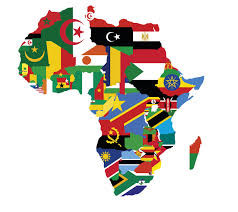
The landmark African Continental Free Trade Area (AfCFTA) aims to increase Africans’ prosperity through more intra-African trade by eliminating tariff and non-tariff barriers. There is however the question of the production of the goods and services that will be traded.
Scaling up production will require an injection of local and foreign investment into African industries. The increased focus on investment is a logical next step in the AfCFTA’s implementation process.
In February, a draft protocol on AfCFTA investment was submitted to the African Union heads of state summit. The protocol is part of the second phase of the free trade area negotiations. It aims to facilitate and protect intra-African investment and improve the attractiveness of the single market to foreign direct investment.
Among other things, the draft protocol provides for a Pan-African Investment Agency to help coordinate investment promotion by AfCFTA member states. To ensure its success, lessons from previous attempts must be examined.
Linked to the goal of scaling up African industries is a recognition of the role of regional value chains in a free trade area. The AfCFTA secretariat has identified some key value chains to prioritise for their export potential. These include automotives, textiles and apparel, pharmaceuticals, and cocoa, among others.
These regional networks are one of the solutions to the anticipated competition among AfCFTA member states in developing specific sectors. The clashes between national industrial policies and the AfCFTA’s aspirations are already proving a challenge to the negotiations.
Given that regional value chains may require cross-border investment, a coordinated approach is ideal. Such regional investment promotion activities are often carried out by investment agencies, and have existed in Africa for some time. Some initiatives were started by regional blocs and national governments; others by international organisations. They have taken the form of policies, networks, forums or actual agencies.
The Common Market for Eastern and Southern Africa (COMESA) launched the COMESA Regional Investment Agency in 2006. Beyond promoting the region, the agency aimed to strengthen the capacity of national investment promotion agencies within its jurisdiction. However, it has faced some challenges, including a lack of political credibility and resources.
- Why Maser CEO Suri thinks AfCFTA is a winner for start-ups
- AfCFTA bolsters Zim SMEs
- Outcry over state of Binga-Dete road
- Why Maser CEO Suri thinks AfCFTA is a winner for start-ups
Keep Reading
At the national level, the Nigerian Investment Promotion Commission embarked on the National Investment Certification Programme for States in 2016. To ensure the investment readiness of the country’s states, the project provided capacity building to help get states’ investment promotion structures certified. One challenge was the varying levels of capacity within the states as well as their differentiated investment promotion mechanisms.
There have been recent attempts to relaunch the programme.
A third initiative is the Africa Investment Promotion Agency Network (AfrIPANet), initiated by the United Nations Industrial Development Organisation (UNIDO) in 2001. AfrIPANet was designed as a ‘common platform to discuss and design investment promotion strategies’ and recorded some achievements. Although AfrIPANet appears to be on hold, UNIDO continues to support African investment promotion agencies through its Invest-in-ACP initiative — a cloud-based, digital platform.
The Economic Community of West African States created a Regional Investment Policy Framework in 2007, but assessing how much has been achieved is difficult. The East African Community has a Business & Investment Forum, and the African Development Bank has the Africa Investment Forum, which is held every year.
Major challenges facing all these initiatives are their sustainability and difficulty measuring their impact. Mobilising resources to keep them effective becomes more complex over time, especially when they are tied to specific donor projects with limited funding cycles.
Aside from the varying capacities of investment promotion agencies, there is also the challenge of varying political will across the blocs to implement needed reforms. The proposed Pan-African Investment Agency will be established within the same tricky ecosystem with bureaucratic hurdles, insufficient political will and funding constraints.
To maximise the agency’s potential, it must be set up to cooperate with existing regional and national investment promotion agencies to avoid duplication and leverage resources more efficiently. A monitoring and evaluation framework will be needed to track progress and identify areas for improvement.
- TeniolaTayo, ISS Consultant and Principal Advisor, Aloinett Advisors











